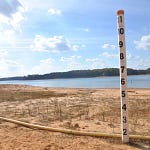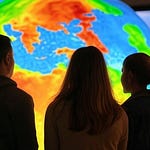
In this podcast, I talk about our horizons of concern. I discuss what it means to love kids who will experience the full blast of the climate crisis, decades from now.
When facing threats that are fast-moving and increasingly chaotic, it’s natural to want a simple answer. The more threat and confusion we feel, the simpler the answer we’re likely to seek. Someone is always prepared to provide those simple answers, for profit or political advantage.
We see this in the field of climate foresight, where a wide range of ratings and scores and lists and trainings and survival products are newly available for purchase. Looking for a way to calm your climate anxiety with a soothing bath salt, bug out to a supposed climate haven or build a bunker to save yourself from societal breakdown? Two minutes of Googling and a valid credit card will find you someone willing to tell you what you want to hear.
But in real life, here in the planetary crisis, there are no simple, one-size-fits-all answers.
Which is okay, because we don’t need simple answers. What we need is an increased capacity for making good decisions in unprecedented situations.
The discontinuities unfolding around us will not be “solved” in our lifetimes—or for generations to come. We won’t be returning to past stabilities, and there is no new stability we can now hope for if we just cut carbon fast enough.
Instead we need to understand personal climate strategies as evolving tools. We should make critical decisions before we lose the option to make them, but also be aware that there are no permanent solutions in an era of ongoing large-scale transformations. We’re planning with imperfect information, and each person or family has different needs and constraints.
One way in which our needs differ profoundly is our timelines.
If you’re retired and single, without kids, accepting the short-term odds on increasingly probable catastrophes might be a valid choice. Short planning horizons let us discount future risks.
Taking those same chances becomes reckless, though, when we consider the prospects for our kids or the young people we care about in general. Our horizon of concern dictates that we ready ourselves for a world beset by chaos and calamity, in part so we can help our kids be ready in turn.
Our popular debate still treats 2050 as far ahead, and 2100 as another world. Yet babies born today in wealthy countries are statistically likely to live to see the year 2100.
And 2100 will be a tough time.
Paradoxically, the farther ahead we’re thinking, the more important making today’s big decisions in foresighted ways becomes.
Adaptability is key, but so is getting to relative safety while it’s still affordable. So is updating our worldviews and skillsets. So is investing attentively. So is strengthening our ability to be see this new era for what it is. And so, as well, is growing purpose-driven conversations about the future we face with people we care for.
How far ahead does your horizon of concern stretch?
Alex
PS: Articles I cite in the podcast:
Global emergence of unprecedented lifetime exposure to climate extremes
“Under a 1.5 °C pathway, 52% of people born in 2020 will experience unprecedented lifetime exposure to heatwaves. If global warming reaches 3.5 °C by 2100, this fraction rises to 92% for heatwaves, 29% for crop failures and 14% for river floods.”
[Unprecedented: "extremes above the 99.99th percentile of exposure expected in a pre-industrial climate."] 1-in-10,000 year occurrences.
Warming of +1.5 °C is too high for polar ice sheets
“[C]urrent rates of SLR could increase rapidly with only small changes in temperature. Identifying temperature thresholds for each ice sheet is, therefore, critically important, with recent work suggesting best estimates for the GrIS and WAIS at +1.5 °C
“[D]espite recent advances, few ice sheet models accurately reproduce the rapid mass loss from ice sheets over the last few decades, suggesting uncertainties may be larger than assumed, even for low emissions scenarios. Indeed, while models are effective in exploring parametric uncertainty, they are less well suited for capturing epistemic uncertainties. This point is highlighted by an analysis of expert judgement94, which found much higher uncertainties associated with ice sheet contributions to sea level, e.g. a GMSL rise >2 m by 2100 fell within the 90th percentile credible range for a high emissions scenario…”
The Guardian covered my work recently, in a piece titled, “‘All of his guns will do nothing for him’: lefty preppers are taking a different approach to doomsday.”
- Find me on Bluesky.
- Check out my books: Worldchanging and Carbon Zero
- View my TED Global talks on sustainability and cities.
- I’ve spoken with the media hundreds of times. I was featured in a NY Times Magazine piece, "This Isn't the California I Married." My writing was the jumping-off point for an episode of This American Life titled Unprepared for What Has Already Happened, as well as the podcasts Without; The Big Story; Everybody In the Pool and 99% Invisible’s Not Built for This series.
This podcast, When We Are, is available on Apple Podcasts, Spotify, Overcast and other podcast platforms around the world. Please rate, review, follow and share these episodes (it helps more people find the show). Thank you!










